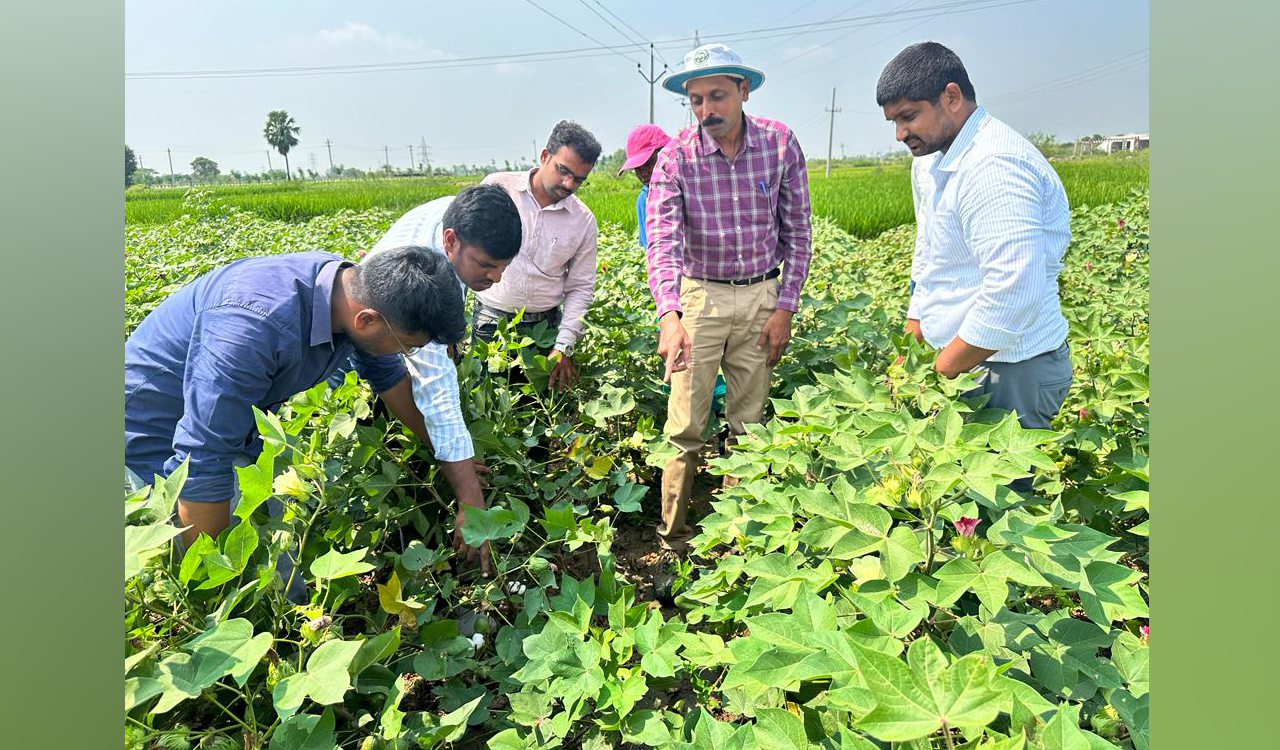The Central Institute of Cotton Research (CICR) Nagpur, in collaboration with the Siddipet agriculture department, is promoting high-density cultivation of cotton as an alternative to traditional methods.
Published Date – 6 February 2024, 06:40 PM

Siddipet: A few farmers, who cultivated high-density cotton in their fields in Siddipet district, have experienced overwhelming results this year.
Since the traditional way of cultivation of cotton is fraught with many issues, the Central Institute of Cotton Research (CICR) Nagpur had decided to encourage high-density cultivation. High density plantation is different from the conventional practice. Usually, farmers sow 7,000 to 10,000 seeds in an acre of cotton field.
However, the CICR and Siddipet agriculture department, as part of the high density cultivation system, are making farmers sow 25,000 to 29,000 seeds on an acre of land by using a machine and reducing the distance between each plant.
Traditionally, farmers will pick the cotton three to five times beginning from October to February. However, under the high density cultivation system, farmers were asked to spray the Chamtakar pesticide, which will control the growth of the plant. Cotton picking in high-density cultivation will be over two times.
The crop will be removed by the middle of December when farmers can go for the Yasangi crop. In the traditional way of cultivation, each cotton plant will get 50 to 60 bolls. In high density cultivation, one plant will get 25 to 30 bolls. But since there are more number of plants after the number of seeds sown was tripled, the cotton yield will increase from 20 percent to 40 percent.
Speaking to Telangana Today, a farmer, T Naresh Kumar of Pamulaparthy in Markook mandal, said he hardly used to get 7 to 8 quintals of cotton when going for the conventional method of cottong farming. Naresh Kumar said he got 16 quintals per acre yield this year after opting for high-density cotton cultivation. He says he got an additional income of Rs.50,000 per acre of cotton cultivation this year compared to his previous income. Naresh Kumar also said he had removed the cotton crop after picking twice and cultivated maize during Yasangi, which would give an additional profit of Rs.25,000.
Agriculture Officer (Markook Mandal) T Nagendar Reddy said crop rotation would give better results as maize enriches the soil with nutrients which will help in giving better yields next year.
“The two-time picking of cotton will also save the spending on labour besides addressing the labour challenge issue with machine sowing,” he said.
Long-duration cotton crops are usually attacked by pink-bowl worms, which is a threat that can be overcome in high-density cultivation, he said, adding that Rasi Seeds company had gifted a pneumatic planter to Markook mandal which made the sowing of seeds in high-density cultivation easy.
District Agriculture Officer K Shiva Prasad said farmers in the district had cultivated high-density cotton in 697 acres on a pilot basis in 2023. Most of these farmers were from Markook, Jagadevpur and Cheriyal Mandals. The CICR had given Rs.4,000 for seeds and Rs.800 per acre for integrated pest management as an incentive to encourage the farmers to switch to high-density cultivation.
CICR Director YJ Prasad made multiple visits to cotton fields in Siddipet district to examine the practice and know the challenges the farmers were facing. The CICR will continue the work in the coming year as part of their three-year pilot project. Shiva Prasad said more farmers were coming forward to switch to high-density cultivation this year after seeing the benefits the farmers experienced this year.








